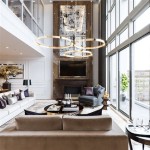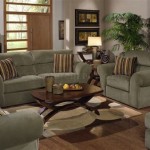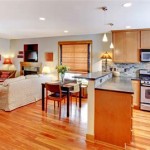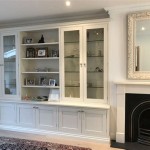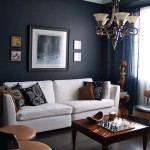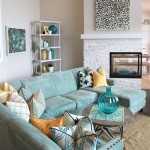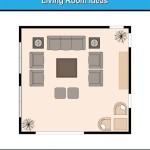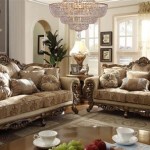Small Living Room Table Lamps: Illumination and Style in Compact Spaces
The living room, often considered the heart of the home, is a space for relaxation, entertainment, and social interaction. Effective lighting plays a crucial role in setting the ambiance and functionality of this central area. In smaller living rooms, optimizing space is paramount, and traditional floor lamps or oversized fixtures may be impractical. Small table lamps offer a versatile and effective solution for providing adequate illumination while complementing the room's aesthetics without overwhelming the limited space. This article will delve into the considerations for selecting small living room table lamps, examining their styles, functionality, placement, and the benefits they offer in enhancing the overall living room experience.
Key Considerations Before Selecting Small Table Lamps
Before embarking on the search for the perfect small table lamp, several factors warrant careful consideration. These include the size of the table, the overall style of the room, the desired level of illumination, and the specific functions the lamp will serve. Failing to account for these elements can result in a lamp that is disproportionate, clashes with the existing décor, or fails to provide sufficient light for the intended activities.
First and foremost, the size of the available surface area dictates the maximum footprint of the lamp. A lamp that is too large will dominate the table, leaving little room for other items and potentially appearing visually crowded. It's advisable to measure the table or surface where the lamp will be placed and note the dimensions. Ideally, the base of the lamp should occupy no more than one-third to one-half of the table's surface. This allows for visual breathing room and sufficient space for books, decorative objects, or remote controls.
Secondly, the lamp's style should complement the existing décor of the living room. A modern, minimalist lamp might appear out of place in a traditionally styled room, and vice versa. Consider the color scheme, materials, and overall aesthetic of the room when choosing a lamp. Options range from sleek metal designs to rustic wooden bases, and from classic fabric shades to modern glass or acrylic diffusers. Coherence in style ensures a harmonious and visually appealing environment.
Thirdly, the desired level of illumination is a crucial consideration. Different lamps offer varying degrees of brightness and light distribution. A task lamp designed for reading will require a more focused and brighter light than a decorative lamp intended for ambient lighting. Assess the primary purpose of the lamp – whether it's for reading, accent lighting, or general illumination – and select a lamp with the appropriate wattage and shade design. Consider the type of bulb used as well, as LED bulbs offer energy efficiency and a range of color temperatures.
Finally, consider the specific functions the lamp will serve. Will it be used primarily for reading? Will it be used to highlight a specific artwork or decorative element? Will it be used to provide general ambient lighting? These considerations will influence the type of lamp chosen, including its adjustability, light direction, and overall design. Some lamps feature adjustable arms or shades, allowing for customized light direction, while others offer dimmer switches for controlling the intensity of the light.
Exploring Different Styles and Materials
The market offers a diverse array of small table lamp styles, each characterized by unique designs, materials, and aesthetic appeal. Selecting the right style is vital for ensuring that the lamp seamlessly integrates into the living room's overall décor. Some popular styles include contemporary, traditional, mid-century modern, and industrial, each offering distinct visual characteristics.
Contemporary lamps often feature sleek lines, minimalist designs, and modern materials such as metal, glass, and acrylic. These lamps are typically characterized by their clean aesthetic and absence of ornate details. They are well-suited for modern or minimalist living rooms with a focus on simplicity and functionality.
Traditional lamps, on the other hand, often incorporate classic designs, ornate details, and traditional materials such as wood, ceramic, and fabric. These lamps often feature decorative bases, intricate carvings, and fabric shades adorned with patterns or embellishments. They are well-suited for traditional or vintage-inspired living rooms that embrace a sense of elegance and formality.
Mid-century modern lamps draw inspiration from the design aesthetic of the mid-20th century, characterized by clean lines, organic shapes, and a focus on functionality. These lamps often feature wooden bases, geometric shades, and a muted color palette. They are well-suited for mid-century modern or eclectic living rooms that embrace a retro aesthetic.
Industrial lamps draw inspiration from industrial settings, often featuring exposed metal, raw finishes, and functional designs. These lamps often incorporate elements such as pipes, gears, and Edison-style bulbs. They are well-suited for industrial or urban-inspired living rooms that embrace a raw and edgy aesthetic.
Beyond the style, the materials used in the lamp's construction play a significant role in its aesthetic appeal and durability. Common materials include metal, wood, glass, ceramic, and fabric. Metal lamps offer durability and a sleek, modern aesthetic. Wooden lamps offer warmth and a natural aesthetic. Glass lamps offer transparency and a contemporary aesthetic. Ceramic lamps offer a range of textures and patterns. Fabric lamps offer softness and a traditional aesthetic.
Optimal Placement and Functionality for Enhanced Lighting
The placement of small table lamps within the living room is crucial for optimizing their functionality and enhancing the overall lighting scheme. Strategic placement can create a balanced and layered lighting effect, improving both the ambiance and functionality of the space. Considerations include the height of the lamp, its proximity to furniture, and its role in complementing other light sources.
In general, the bottom of the lampshade should be at eye level when seated. This ensures that the light is directed downwards, avoiding glare and providing optimal illumination for reading or other tasks. If the lamp is placed on a higher surface, such as a bookshelf, a shorter lamp is preferable. Conversely, if the lamp is placed on a lower surface, such as a side table, a taller lamp may be more appropriate.
The proximity of the lamp to furniture should also be considered. Placing a lamp too close to a sofa or armchair can create a cluttered appearance. Conversely, placing a lamp too far away can render it ineffective. Ideally, the lamp should be positioned within easy reach of the seating area, allowing for convenient access to the switch. The lamp's cord should be discreetly hidden to avoid creating a tripping hazard.
Small table lamps can be used to complement other light sources in the living room, such as ceiling lights, floor lamps, and wall sconces. By layering different types of lighting, a more balanced and inviting atmosphere can be created. For example, a ceiling light can provide general ambient lighting, while table lamps can provide task lighting for reading or accent lighting to highlight a specific artwork. Dimmers can be used on both the ceiling light and table lamps to allow for customized lighting levels. Smart bulbs can also be used to remotely control the light output and color temperature from a smart device.
Furthermore, consider the color temperature of the light bulbs used in the table lamps. Warm light (2700K-3000K) creates a cozy and inviting atmosphere, while cool light (4000K-5000K) is more energizing and suitable for tasks. A combination of warm and cool light can be used to create a balanced and versatile lighting scheme. For example, warm light can be used in the evening to create a relaxing atmosphere, while cool light can be used during the day for reading or working.
Finally, consider the use of smart bulbs or smart plugs to automate the operation of the table lamps. Smart bulbs can be controlled remotely using a smartphone or voice assistant, allowing for customized lighting schedules and dimming capabilities. Smart plugs can be used to turn the lamps on or off remotely, adding convenience and energy efficiency.

Best Living Room Lamps Hgtv

15 Living Room Table Lamps For 2024

360 Lighting Emma 21 High Small Mid Century Modern Accent Table Lamps Set Of 2 Brown Wood Finish Ceramic Oatmeal Shade Living Room Bedroom Bedside

Mushroom Table Lamp Dimmable Glass Bedside Cute Small Nightstand For Living Room Bedroom Home Decor 7 1 H White Walmart Com

Types Of Lamps For The Living Room And More Home

Living Room Ideas How To Choose The Best Table Lamps Vintage Style

360 Lighting Randi 24 High Small Modern Coastal Table Lamps Set Of 2 Usb Port Night Light White Glass Living Room Charging Bedroom Bedside Nightstand

Best Living Room Lamps Hgtv

Types Of Lamps For The Living Room And More Home

51 Table Lamps For Living Room Lighting Perfection

